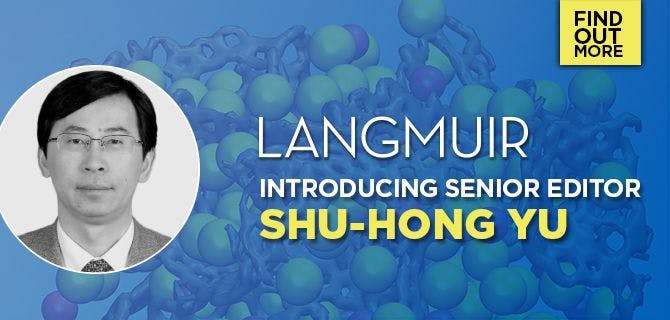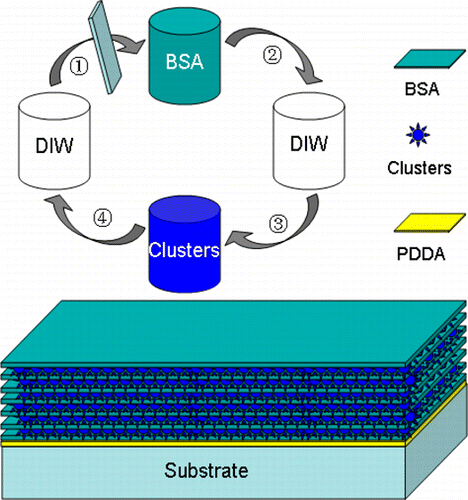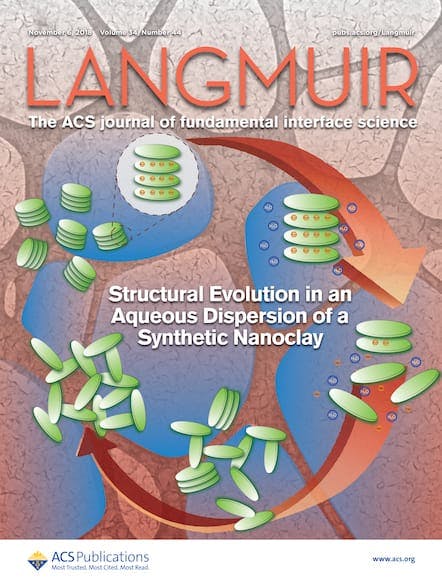Langmuir is pleased to introduce Shu-Hong Yu, who recently joined the team as a Senior Editor for the journal. Professor Yu and his research group work from the Biomimetic and Nanochemistry Lab at the University of Science and Technology of China. We asked Professor Yu about his career, his group’s research, and his advice for […]

We asked Professor Yu about his career, his group’s research, and his advice for younger researchers:
What sparked your initial interest in biomimetic and nanochemistry?
The huge diversity of hierarchical micro-/nano- rigid structures existing in biological systems is increasingly becoming a source of inspiration for materials scientists and engineers to create next generation of advanced functional materials. Accompanied with the development of nanotechnology, some biologically hierarchical rigid structures have been duplicated and mimicked in artificial materials through hierarchical organization of micro-/nanosized building blocks. Unique hierarchical biominerals with high performances in Nature attracted my interests. Synthesizing bio-inspired engineering materials with high performance and self-assembling nanoscale building blocks in a chemistry lab are my main research objectives.
How would you describe your work?
My research focuses on how to assemble nanoscale building blocks into ordered assemblies with unique functionalities, and how to integrate them with already existing macroscopic structures and realize their functionalization. We are working on developing bio-inspired methods for scale-up synthesis of high quality nanoscale building blocks including nanowires, nanosheets and bio-inspired self-assembly process for constructing macroscopic assemblies in form of thin films or 3D integrated structures. These assembled structures show enormous application potential in diverse fields, such as advanced engineering materials, electronics, surface-coatings, elastomeric conductors, electrocatalysis, and super adsorbents.
How do you see your work influencing other areas of chemistry?
Although the properties of nanomaterials are frequently superior to those of their bulk counterparts, translating the unique characteristics of individual nanoscale components into macroscopic functional materials remains a challenge. Our bio-inspired methodology will add value to the field of material chemistry, nanotechnology and other related fields. Biomimetic synthesis of many fascinating hierarchical micro-/nano- rigid structures existing in biological systems will provide a new source of discovery and creation in the field of material science and many other fields.
What’s the most common piece of advice you give to younger scientists working in your group?
Some advice I would like to give to the younger scientists working in my group is: Maintain your curiosity about natural materials. Learn more from nature to promote discovery, creation and innovation in the next generation of materials.
What else should Langmuir readers know about you and your group?
My group is working hard and trying our best to act as a bridge across synthetic inorganic chemistry and material chemistry by taking advantage of our experiences in synthesis of nanoparticles and bio-inspired self-assembly of nanoscale building blocks.
Read more of Professor Yu’s research, published in ACS Journals including:
Singlet Oxygen-Engaged Selective Photo-Oxidation over Pt Nanocrystals/Porphyrinic MOF: The Roles of Photothermal Effect and Pt Electronic State

***
Ion-Catalyzed Synthesis of Microporous Hard Carbon Embedded with Expanded Nanographite for Enhanced Lithium/Sodium Storage
J. Am. Chem. Soc., 2016, 138 (45), pp 14915–14922
DOI: 10.1021/jacs.6b06673
***
Surface Charge Polarization at the Interface: Enhancing the Oxygen Reduction via Precise Synthesis of Heterogeneous Ultrathin Pt/PtTe Nanowire

***
Precursor Triggering Synthesis of Self-Coupled Sulfide Polymorphs with Enhanced Photoelectrochemical Properties
J. Am. Chem. Soc., 2016, 138 (39), pp 12913–12919
DOI: 10.1021/jacs.6b06609
***
The Electrochemistry with Lithium versus Sodium of Selenium Confined To Slit Micropores in Carbon
Nano Lett., 2016, 16 (7), pp 4560–4568
DOI: 10.1021/acs.nanolett.6b01819
***
Free-Standing Copper Nanowire Network Current Collector for Improving Lithium Anode Performance
Nano Lett., 2016, 16 (7), pp 4431–4437
DOI: 10.1021/acs.nanolett.6b01581
***
Ultrathin Hybrid Films of Polyoxohydroxy Clusters and Proteins: Layer-by-Layer Assembly and Their Optical and Mechanical Properties

Langmuir, 2014, 30 (18), pp 5248–5255
DOI: 10.1021/la500434a
***
